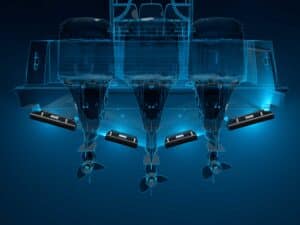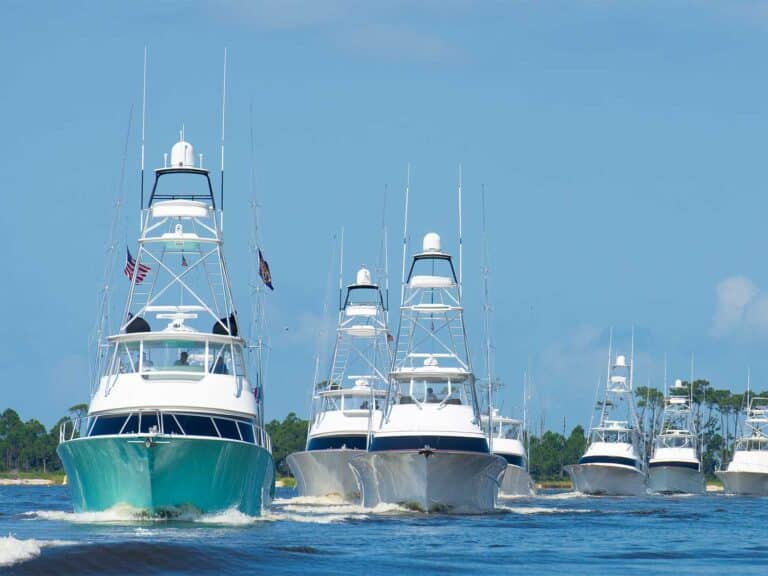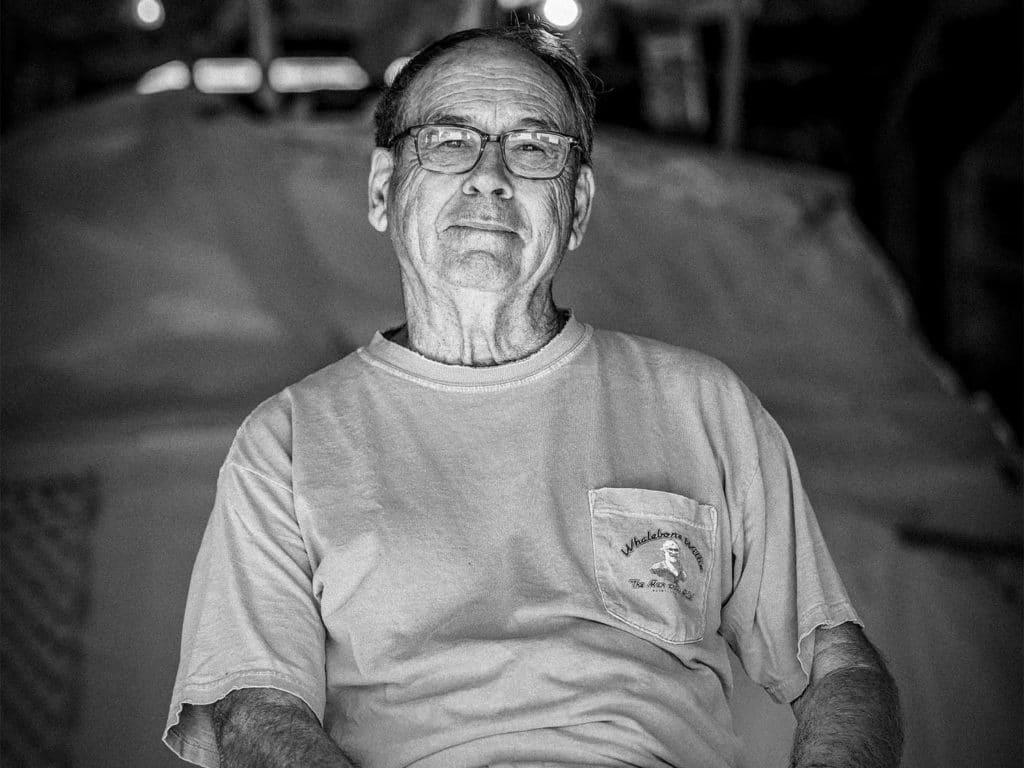
In 1955, Sunny Briggs was 12 years old. While other children his age were doing normal kid things, he was well on his way to becoming an accomplished mate. Briggs would hitch a ride every morning from his home in Kill Devil Hills, North Carolina, with Capt. Lee Perry to fish on Ginny B. He then worked for Capt. Omie Tillett, who took the young man under his wing. Soon, Briggs was building boats alongside Sheldon Midgett, Buddy Davis, Billy Holton and Buddy Cannady. After building a few boats with Tillett, and with his blessing, Briggs was ready to start his own. Now at 78, with 60 boats on the water from 35 to 70 feet, it’s time to celebrate a notably distinguished career as Briggs prepares for retirement.
Q: What hobbies do you enjoy that help to offset the challenges of building boats?
A: I like hunting ducks. Actually, I love duck hunting. That is something that I shared with my father, and it’s near and dear to my heart. It helps get me out of the boat shop in the winter.
Q: What are some of the common misconceptions about boatbuilding?
A: Most people think it’s easier than it really is. I’ve fielded countless requests and opinions over the years, but you really cannot cut corners or take shortcuts when you’re striving for greatness. I need to credit Omie Tillett for helping me sort out people’s opinions and ideas. Clients want to be heard, but it doesn’t always translate to sound ideas.
Q: What advice would you have given yourself 20 years ago?
A: Honestly, I don’t think I would make many changes. I did not grow up with endless financial means, and finances were always on the forefront of my decisions. I think I would have liked to have pushed a few things in my designs and builds, but the financial pressure was always at the center of my focus. I just never wanted to get in so deep that it could collapse everything I’d worked so hard for.
Q: Is it true that you were the first boatbuilder to use a CNC machine to cut stations for the jigs?
A: Well, yes. And actually, I need to credit my wife with this—she worked in the furniture industry where they were using CNC technology. She came home one night and asked why we were not doing the same thing. Around 1985, I spoke to my designer, Steve French, and ran the idea by him. We figured it out, so yes, we were the first to use a CNC machine to cut the stations for our jigs. It had never been done before here.
Q: Who were your inspirations?
A: Without a doubt, Omie Tillett, and not just in boatbuilding. He was a great man in every aspect of life. His brother, Tony Tillett, and Capt. Billy Baum were also strong influences in my life. Omie was really the one who encouraged me to run boats and ultimately take the leap into boatbuilding. In fact, he let me run his first charter boat, Jerry Jr. Omie really had a way of bringing out the best in you. I’ve learned something from all the builders I’ve worked with. I’ve had a blessed career, to come along when I did, and have the opportunity to build great boats for an honest price. During my era, we were still figuring it all out, from the boats to the tackle to the fishing. It was a lot of fun. I loved building for my clients and defining the fishery with every new boat.
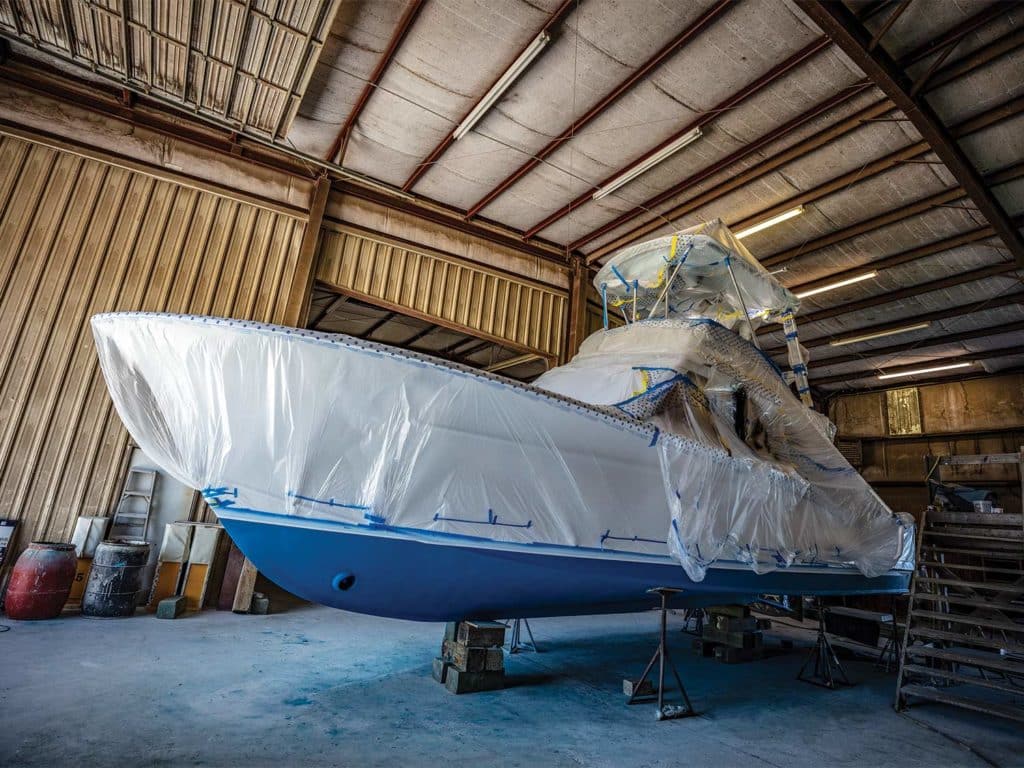
Q: Do you have any favorites?
A: I can’t say I really have a favorite, but I did enjoy building the larger boats—over 50, 60, 70 feet. I appreciated having the space to do more with the bigger hulls. They also ride so much better.
Q: Where do you see boatbuilding heading in the future?
A: Innovation will continue to push builders to do more. I believe that we’ll see boats cruising at 50 knots one day. The technology will be there to enable buyers to do what they want, but I really wonder how some of this will change the fishing. Forward-facing sonars and speed will definitely affect how boats are built, and how they are used.
Q: As a custom builder, did you ever get any odd requests?
A: Every buyer has a few things they want or that they are passionate about. The oddest request by far was from actress Goldie Hawn’s nephew. He wanted a hot tub in the master stateroom of a 58-footer we were building for him, and we made it happen.
Q: What do you feel is the trademark characteristic of your boat?
A: I’m inclined to just say that we build a very dry boat. There were a lot of boats by other builders at the start of my career that didn’t deliver a very good ride—at least by today’s standards. I was proud to build a dry boat, as well as one that was able to travel all over the world. I never imagined my boats would be fishing in all the places that they have. I am extremely proud of that.
Q: What evolved most from your first build to your last one?
A: I’ve had a really fun career. Some of my first boats were crabbing boats that were built for working. I’ve built duck boats, and I’ve built sport-fishers that have traveled the world. I can’t say that anything specifically “changed,” however, I built what my clients wanted, and I’ve loved them all. To this day, I still see some of my first boats crabbing in the sound. It puts a smile on my face every time.
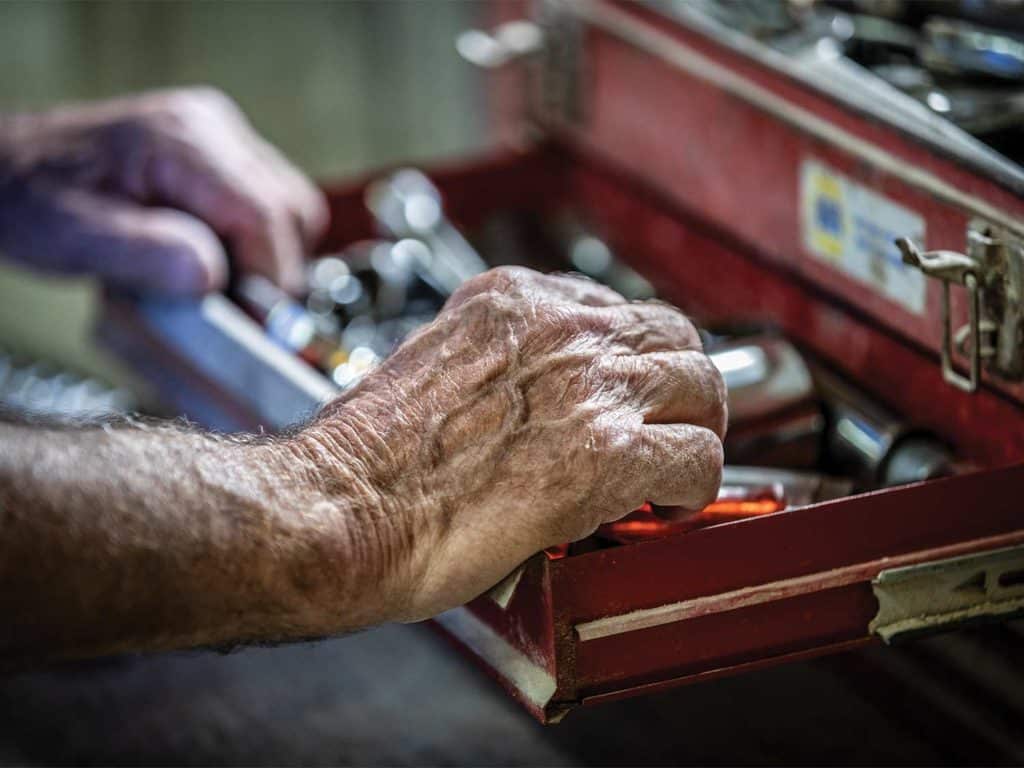
Q: Why do you feel the Outer Banks produces such high-quality captains?
A: It’s because most of them started in the cockpit learning how to fish. This region worked hand in hand with people building boats and a community that wanted to fish on them. When you spend 15 years mating, you learn a few things about finding fish. Those guys aren’t just captains; they’re lifelong fishermen who have put in their time. It’s hard to do that in some other places.
Read Next: Learn more about the history of North Carolina’s custom boatbuliders.
Q: What was it like fishing out of Oregon Inlet back in the 1960s and ‘70s?
A: To begin with, we left the dock around 4 a.m. because the boats ran a lot slower. Then, we didn’t start billfishing until the box was full of mahi. You had to fill the box with meat before you did anything else. The other thing was, the captain would always come down to help rig or run the cockpit. Countless times I would look over, and Omie would be standing next to me grabbing a dolphin out of the water, then run back up to the bridge. And really, that’s how so many guys learned back then.
Q: What are your plans in retirement?
A: I’m going to spend as much time as I can with my grandson and teach him everything I can. I’m also going to duck hunt as much as possible, and lastly, I’m going to go back to my beginnings and build small duck boats in my backyard. I’ve had so many people ask me to build them one, I just never had the time. Until now.
This article originally appeared in the December 2021 print issue of Marlin.



